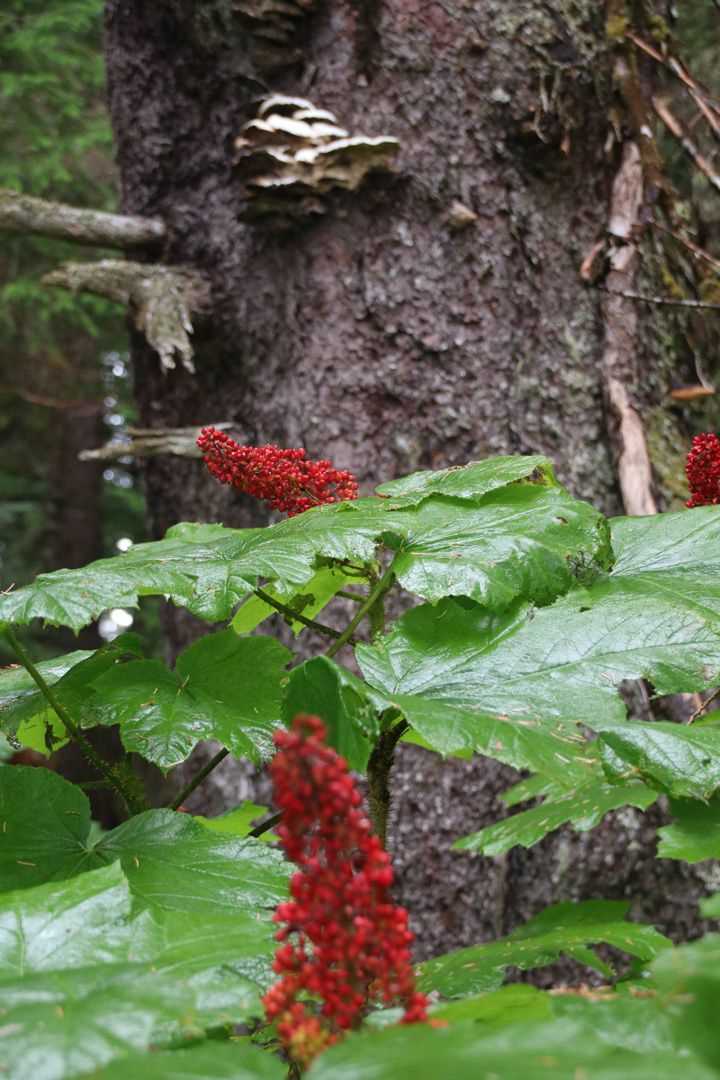We met a brown bear on entering Sitkoh Bay at the start of the day, an elongate cut into Chichagof Island’s eastern shore. This has been home to a native Tlingit settlement, a cannery, logging operations, and sport fishing, all of which have made use of the area’s abundance of salmon and forestry.
Departing from a long arcing beach into patches of old growth temperate rainforest, we discovered bear trails meandering through fruiting devil’s club patches and over fallen nurse logs. The number of banana slugs we spotted on the forest floor and vegetation was staggering. We clambered up to an old logging road to gain greater access to the forest.
Kayakers explored the waters along the intertidal shore, discovering jellyfish, sea stars and seals. Dragonflies, which eat up to 300 insects per day, and belted kingfishers, one of a few bird species in the world where females are more colorful than males, patrolled the beachfront.
After lunch, we welcomed on board Dr. Andy Szabo from Alaska Whale Foundation, who enlightened us on the secret lives of humpback whales. He shared his group’s research and filled in gaps in our understanding of the amazing synchronized bubble net feeding behavior we had witnessed earlier in the week.
After viewing humpback whales in Chatham Strait, National Geographic Sea Lion poked into a few of the bays along Baranof Island’s eastern shore, enjoying views of waterfalls and bald eagles dotting the treetops. Captain Sinclair hosted our National Geographic Global Explorers, giving the young travelers a hands-on tour of the bridge.
While cruising a bay with a salmon hatchery, where humpback whales have been seen feeding on the released fish, an immature eagle snatched a northwestern crow in its talons and was quickly mobbed by the victim’s murder-mates into dropping it into the water. We were fascinated in observing the other crows fending off the attacking eagle and continuously swooping down over the injured and dying bird floating on the water, as if to check on its welfare or offer whatever help they could. Crows, along with ravens and jays, belong to the highly intelligent and social group of birds called corvids. After hearing Dr. Szabo speak about the compassion and empathy observed in humpback whales interfering in transient killer whale attacks on marine mammals, we couldn’t help but wonder if we were witnessing crows showing compassion for a fallen member of their group.
At recap, we fed barnacles pipette squirts of plankton collected the day before, and to our delight, the barnacles sensed the introduction of new food and began filter feeding with their feather feet on cue under the microscope. After dinner, we toured one more bay and waterfall, confounding a mink in the intertidal zone as Captain Sinclair nosed our ship close to it and the powerful rush of falling water, to end another day of explorations in Southeast Alaska.







